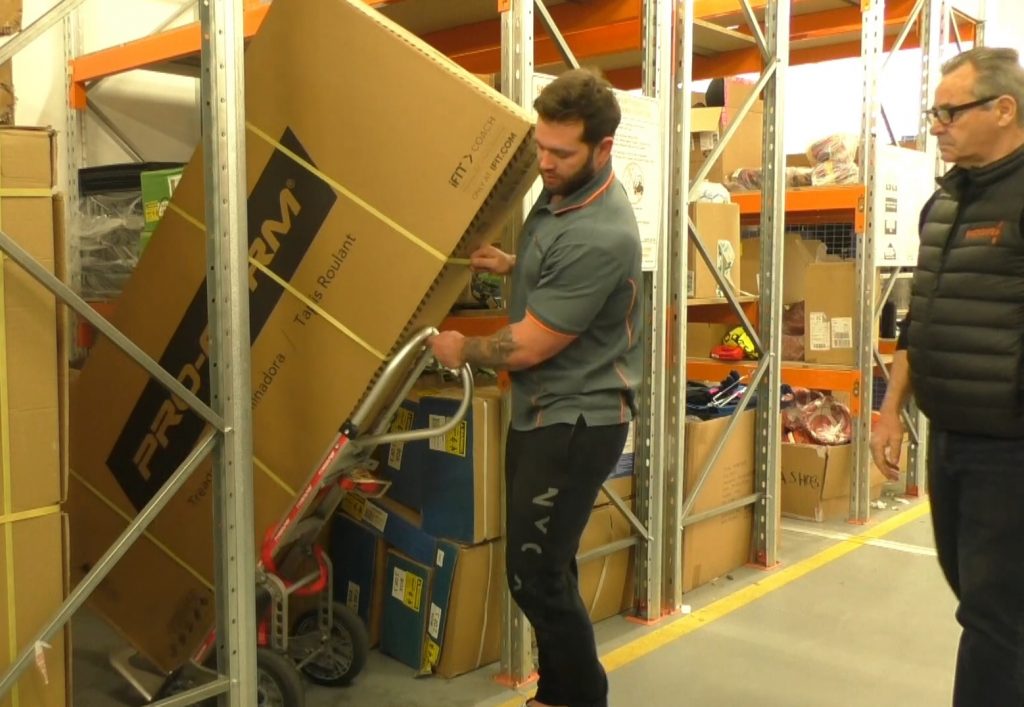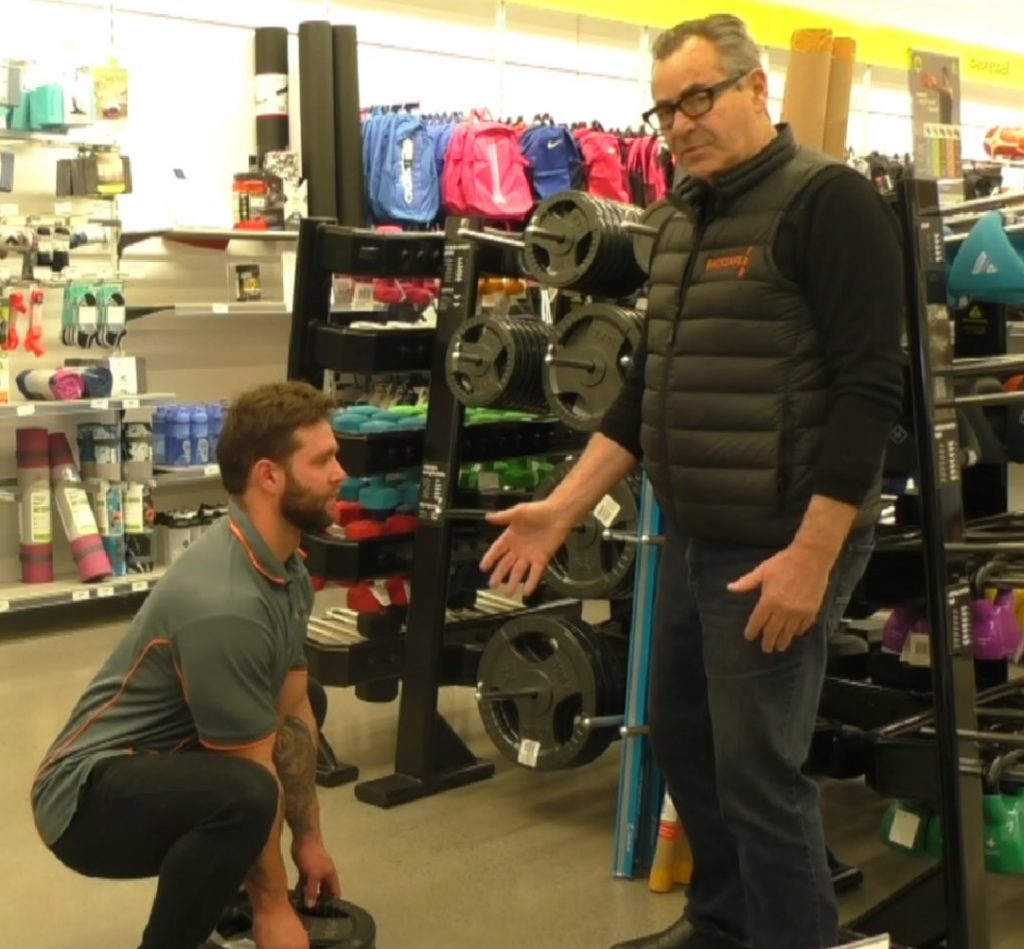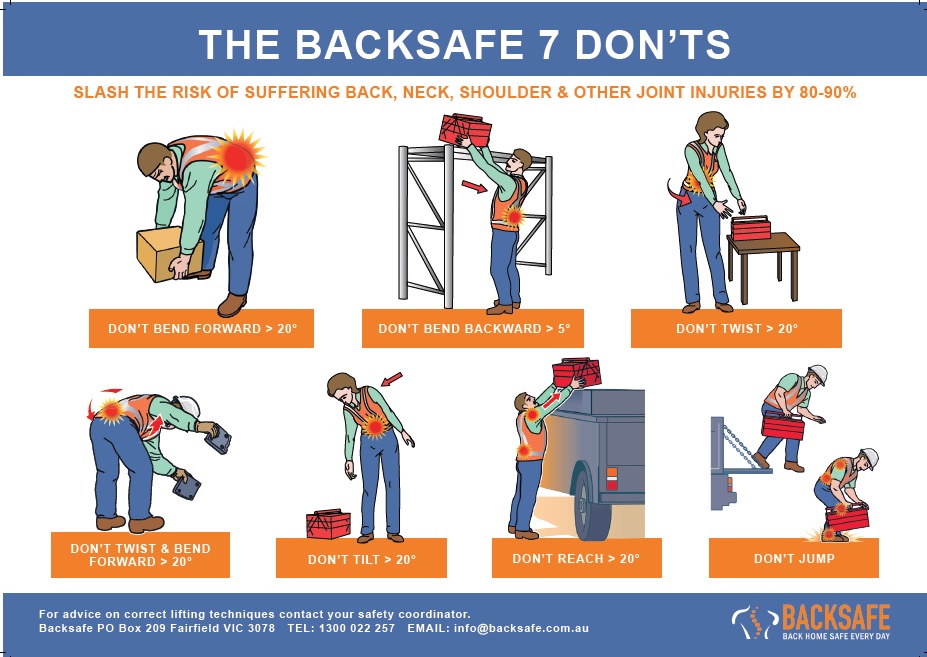Lifting heavy tools, boxes or other items may seem like a simple task, but if done incorrectly, it can lead to serious injuries. Back strains, pulled shoulder muscles, resultant musculoskeletal injuries and even hernias are just a few of the common injuries that can result from incorrect lifting techniques.
When manual handling, your first option should be to use mechanical aids to assist in the lifting process.
However, if you don’t have mechanical aids handy, before you embark on moving or lifting a heavy box or other item, it’s important to understand the risks involved and know how to lift safely.
Understanding the risks of incorrect lifting
Before we dive into the correct techniques for lifting heavy boxes or awkward items, let’s take a moment to understand the potential risks involved. Improper lifting can put significant strain on your back and other muscles, leading to acute injuries. Over time, these injuries can have a long-term impact on your overall health and well-being, particularly if the pressures are transferred to the spinal discs.
It’s important to note that incorrect lifting not only affects your back muscles and your spinal column structure, but can also strain your shoulders, neck, and knees. The added pressure on these areas due to extra leverage pressure can result in muscle tears, joint pain, and even nerve damage. Being mindful of your lifting technique is essential to prevent these types of injuries.
Common Injuries from Heavy Lifting
When you lift a heavy box improperly, you put excessive strain on your back when bending forward greater than 20 degreed from a vertical stand point, which can result in muscle strains, sprains, or even herniated discs. These injuries can cause severe pain, limited mobility, and may even require immediate medical intervention.
In addition to back injuries, improper lifting can also lead to tendonitis in your arms and legs. Tendonitis is a painful condition that occurs when the tendons become inflamed from overuse or repetitive movements. This can significantly impact your ability to perform daily tasks and may require prolonged rest and rehabilitation.
Preparing to lift a heavy box
Now that we understand the risks involved, let’s move on to preparing ourselves for lifting a heavy box or other item safely.
Lifting heavy boxes is a common task in various industries, from warehouses to moving companies. It’s essential to approach this task with caution and proper technique to prevent injuries.
As mentioned earlier, it should be a first priority to use mechanical aids where possible. Mechanical aids remove most of the risk on your body and make the lifting process much safer and easier.
You should only resort to lifting manually if you have no mechanical aids available and you should always warmup and stretch before manual handling.
See our 2 sided stretch card shown below for some before and after work stretches.

Assessing the weight and size of the box
Before attempting to lift a box or particularly an awkward item, take a moment to assess its weight and size. If the box is too heavy for you to handle alone, seek assistance. It’s always better to share the load with someone else rather than risking injury by attempting to lift beyond your capabilities.
Consider the size and shape of the box as well. Awkwardly shaped or oversized boxes can be challenging to lift and maneuver. Ensure that you have enough space to lift the box without obstacles in your way.
Gathering Necessary Equipment

Next, gather the necessary equipment to aid in the lifting process. This may include gloves to enhance grip, a dolly or hand truck to assist with transportation, or lifting straps to distribute the weight more evenly and to reduce the risk from over reaching. Having the right tools can significantly reduce the strain on your body while lifting heavy objects.
Additionally, consider wearing proper footwear with good traction to prevent slipping while lifting. Maintaining a stable footing is crucial in preventing accidents during the lifting process from slips, trips and falls.
The Correct Lifting Technique
Now that we’re prepared, let’s dive into the correct technique for lifting heavy boxes.
Lifting heavy objects can put a significant amount of strain on your body, especially your back. It’s crucial to prioritise safety and proper form to prevent injuries. By following the correct lifting technique, you can not only protect your back but also ensure a more efficient and effective lift when conducting manual handling in your workplace.
Positioning your body for the lift
Stand close to the box with your feet shoulder-width apart. Bend your knees and squat down, maintaining an upright back always within 20 degrees of vertical. Avoid any rounding of your spinal column into a “C Shape” as this can increase the strain of your back.
By squatting and keeping your back uptight, you are utilising the power of your legs, which are much stronger than your back muscles. This proper positioning also helps in distributing the weight more evenly throughout your body, substantially reducing the risk of injury.
Additionally, before lifting, assess the weight of the box. If it feels too heavy or awkward to lift on your own, don’t hesitate to ask for help. It’s always better to seek assistance rather than risk injuring yourself. We want to prevent injuries from occurring, not be stuck trying to treat preventable injuries.

The role of leg strength in lifting
When lifting, remember that your leg muscles are the powerhouses, they are 4 times more powerful than anything you can train in your back. Engage your core and you leg muscles as you stand up, keeping your back straight and relying on the strength of your legs rather than straining your back muscles.
This distribution of force will eliminate or substantially reduce the risk of injury. By focusing on using your legs to lift the weight, you are not only protecting your back but also maximising the power of your lower body (lower centre of gravity), making the lift more manageable and safer.
Furthermore, maintaining a consistent breathing pattern during the lift is essential. Inhale slightly before lifting the box, hold your breath during the lift, and exhale as you set it down. This breathing technique helps stabilise your core and provides additional support during the lift.
Maintaining safety after the lift
Success! You’ve lifted the heavy box or awkward item safely. But the job isn’t quite done. To ensure complete safety, follow these steps.
Moving with the box
When carrying the box, hold it close to your body and avoid twisting or jerking movements. Walk slowly and steadily, keeping your back in a neutral/natural position. If necessary, take breaks to rest and readjust your grip.
Setting the box down safely
When you’re ready to set the box down, reverse the lifting technique. Bend your knees, squat down, and lower the box with controlled movements. Avoid dropping the box or placing it forcefully, as this could cause injury to yourself or damage to the box and its contents.
Tips for regular heavy lifting
If heavy lifting is a regular part of your routine, consider implementing these additional tips to protect your body:
Exercises to improve lifting strength
Strengthening your muscles through regular exercise can enhance your lifting capabilities. Focus on exercises that target your leg, core, and back muscles, such as squats, deadlifts, and planks. Be sure to consult with a fitness professional to ensure proper form and avoid injury during exercise.
Download a copy of the Backsafe Core Strengthening Exercise Booklet to learn more ways to strengthen your core and entire body.
Importance of regular breaks and rest
Give your body the time it needs to recover between lifting sessions. Take regular breaks, stretch, and engage in activities that promote relaxation and muscle recovery. Adequate rest and recovery are essential for preventing overuse injuries and maintaining overall health.
By following these guidelines, you can ensure your safety while lifting heavy boxes or other items. Remember to always prioritise the use of mechanical lifting equipment if possible, however where necessary, correct manual handling techniques will assist in avoiding injuries.
Prioritise proper technique over speed and seek assistance when necessary. Your body will thank you for taking care of it in the long run!




